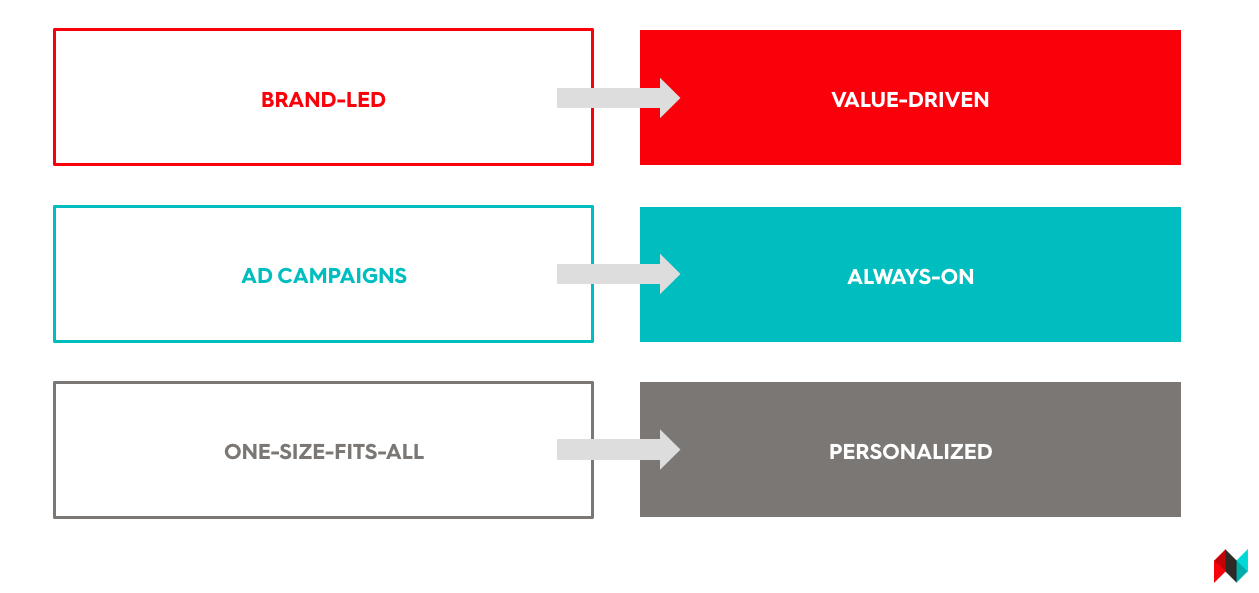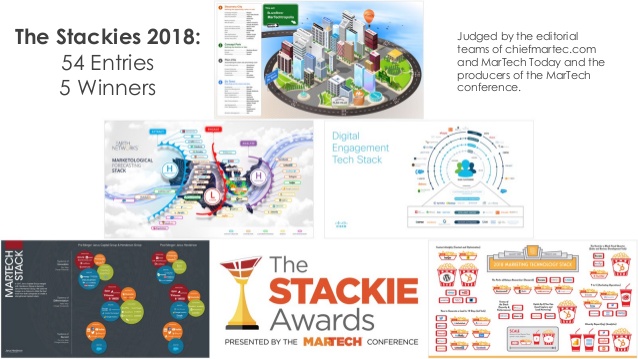Integrated marketing is the process of delivering a consistent and relevant content experience to your audience across all channels. What is the difference between an integrated marketing organization and integrated marketing? You need to build an integrated marketing organization before your brand can deliver a truly integrated customer experience. Integrated marketing organizations prioritize personalization and the customer experience above internal competition and one-way, one-size-fits-all customer communication. Building an integrated marketing organization requires building a culture of collaboration. There are some pretty clear signs that your organization is failing to integrate: Duplication of efforts leading to content waste Role confusion leading to a lack of accountability Business goals are not aligned with your marketing investments Your technology setup is not supporting collaborative efforts No central place to store or access content The marketing end-to-end process is not visible Delays in deployment and publishing Fragmented or disjointed customer journey As a byproduct of competing priorities and pressure to be first to market, most enterprises suffer from one or more of these symptoms. Just 14% of organizations rate themselves as “advanced” in operations (SiriusDecisions “State of B2B Content Study”) Almost half (45%) of marketers feel they lack the necessary talent, technology, and processes to master omnichannel brand marketing (CMO Council) Only 1% of marketers believe they are delivering a consistent, personalized and contextually relevant experience across traditional and digital channels (CMO Council) In a survey of 1,000 marketers worldwide by Rakuten Marketing, respondents estimated they waste an average of 26% of their budgets on ineffective channels and strategies There’s a strong business case for improving team collaboration. There can be as much as a 19% value improvement from fixing integration and collaboration frictions among agencies and teams (R3) Breaking down technology silos improves the customer experience. NewsCred’s ADEPT methodology for integrated marketing maturity emphasizes the importance of an integrated tech stack. The primary goal of building an integrated tech stack is centralized visibility into customer data and experience.
As a phrase and buzzword, integrated marketing is not new. But it has reached critical importance now due to compounding industry challenges, alongside advancements in marketing technology that have made it easier to break down organizational silos. The proliferation of marketing channels has led to consumers being bombarded with messages and content — standing out in a sea of content requires strong strategy and consistent messaging across the user journey.
Integrated marketing is the process of delivering a consistent and relevant content experience to your audience across all channels. It is often used interchangeably with IMC (integrated marketing communications), 360-degree campaigns, and omnichannel marketing — although there’s some nuance between the terms. The ultimate goal of integrated marketing is a consistent, customer-centric experience that delivers results for your brand.
What is the difference between an integrated marketing organization and integrated marketing?
You need to build an integrated marketing organization before your brand can deliver a truly integrated customer experience. Many marketing teams are structured around specific channels, rather than the holistic customer experience. The rise of “digital marketing” fragmented not only the agency landscape but the marketing function. Back in the day, we had a television and a newspaper, then we moved into the digital era which saw us split teams between digital and out-of-home channels. Mobile was separated out (at least briefly) at many organizations and paid social media responsibilities often rest with yet another team.
These modern (read: siloed) marketing teams are not set up for integrated marketing success. There are so many situations where internal teams inherently clash, including competition for budgets, attribution, ideas, and glory. There’s a belief that a culture of healthy competition fosters creative ideas, but the “team of teams” model has repeatedly demonstrated that a culture of collaboration is more effective at producing creative results and also sets a team up for long-term success.
Integrated marketing organizations prioritize personalization and the customer experience above internal competition and one-way, one-size-fits-all customer communication. Building an integrated marketing organization requires building a culture of collaboration.

NewsCred developed the ADEPT framework for building an integrated marketing organization, and it can help you identify gaps in your teams and strategies. The five capabilities of ADEPT (alignment, design, execution, process, and technology) were developed from third-party analyst insights, over a decade of fieldwork with customers, and our in-house team of marketing experts.
Alignment: Internal alignment is essential to success because integrated marketing requires breaking down silos and increased cross-functional collaboration. This goes beyond executive sponsorship; you need active participation with change management, budgetary support, and governance.
Design: Examine your planning model. Are teams collaborating to prioritize key themes across different marketing disciplines? Is there a shared calendar view of all activities that tie into key campaigns? And is there a documented marketing taxonomy and a shared language?
Execution: The execution element looks at the rigor of following through on your plan, processes, and guidelines. Is your team delivering on time and at scale? Is there an adherence to best practices relating to tagging assets appropriately to metadata and taxonomy, auditing for relevancy and redundancies? Agile marketing methodologies often come into play here.
Process: The process element delves into the workflows that guide your marketing execution, specifically how sophisticated and complete these workflows are and whether they are documented. Do your workflows take into account different asset types and approvals as well…

COMMENTS